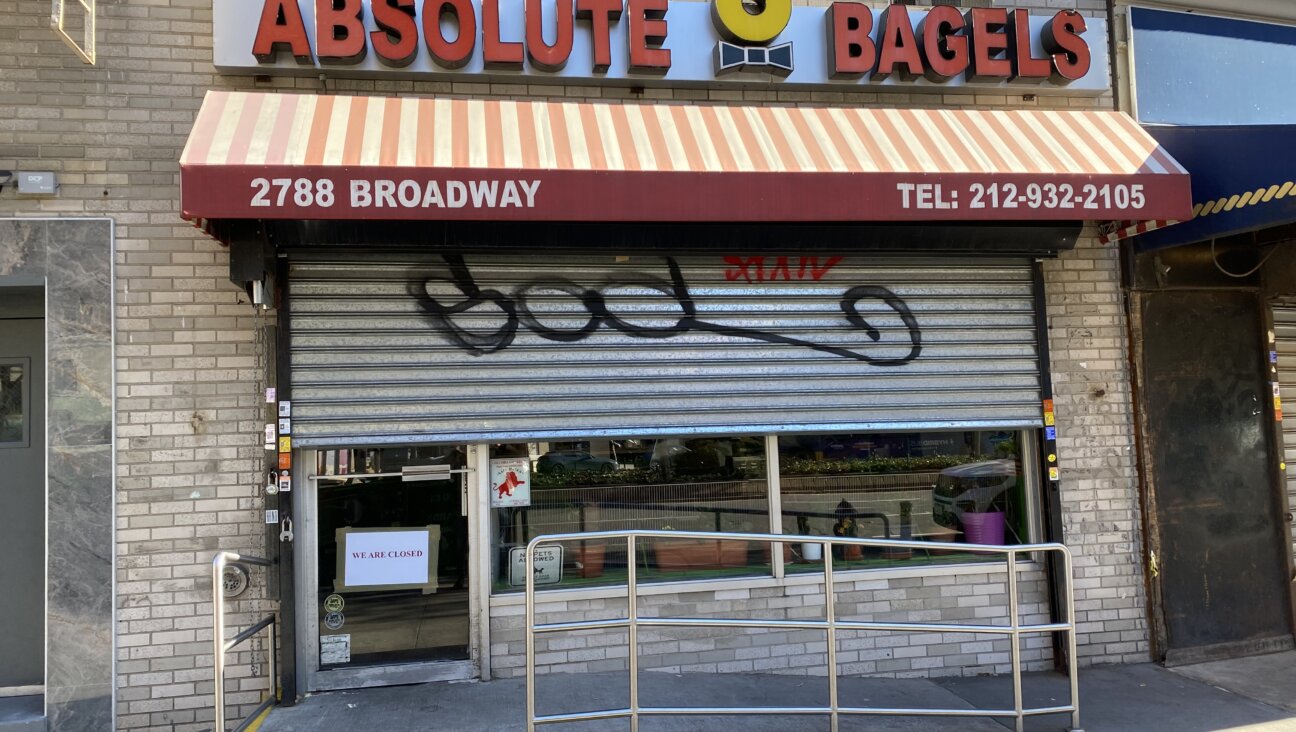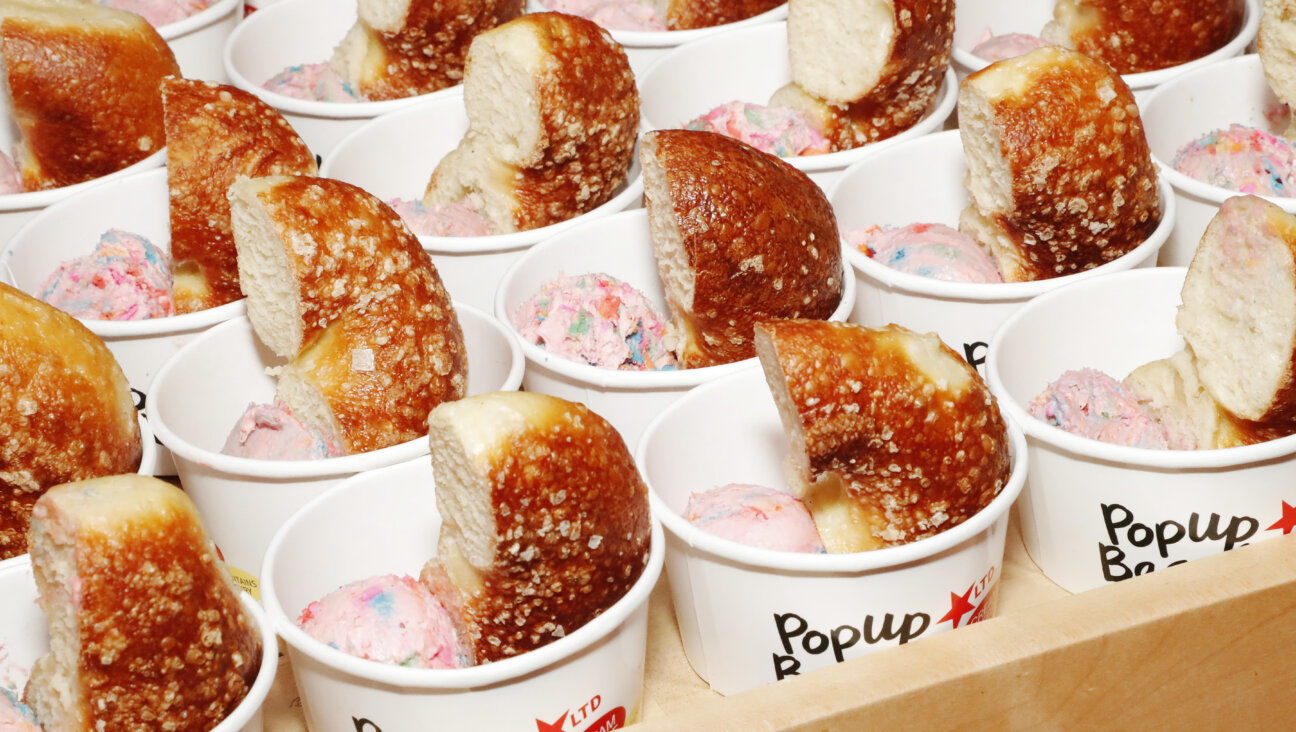Would You Try This 220-Year-Old Canadian Jewish Beer?

After being brewed for over two months, the amber-colored beer finished with sweet, fruity and rustic flavors, and 8.3% alcohol content. Image by Laurie-Anne Benoit

People line up to get a taste of the L’Affaire Hart beer at Le Réservoir brewery. Image by Laurie-Anne Benoit
When the Museum of Jewish Montreal stumbled across a handwritten beer recipe from the 1790s, they quickly realized they had uncovered a precious slice of Canadian Jewish history. But little did they know that a few months later, Montrealers would be able to sample the historic brew — and it would sell out to rave reviews.
The recipe belonged to the Harts, a prominent Jewish family that established a brewery in the province of Quebec in the late 1790s. According to the museum, that would have made it Quebec’s first Jewish beer.
Related
“I’ve read about Jewish winemakers and Jews making hard liquor, but beer is something I’ve heard less about,” said Katherine Romanow, director of food programming at the museum.
With the help of a local craft brewery, the museum produced a limited amount of L’Affaire Hart (The Hart Affair, in English), a modern take on the historic brew, selling it to patrons for the first time in late October.
“I think some people were expecting just a regular blonde beer, but what they got was this beer that was really complex and interesting,” Romanow said.
The beer first came to the museum’s attention after researchers stumbled across a blog post written by Toronto-based beer blogger Gary Gillman, who had discovered the Hart family’s beer recipe in the Quebec government’s archives.
That archive entry states that on December 2, 1796, Ezekiel Hart partnered with his brothers, Moses and Benjamin, to establish a brew and malt house in which to produce ales and beers in Trois-Rivières, a town about halfway between Montreal and Quebec City.
The family’s venture into beer, known as the M & E Hart Company, lasted for about a generation, Romanow said.
After examining the handwritten recipe, which the archive had digitized and keeps online, Gillman surmised that the Hart beer was an all-barley malt and had no sugars or other grains added in.
The ingredients and technique used to brew it at the time also meant that the Harts’ ale was likely “mild” in taste, Gillman wrote.
For Romanow and her colleagues at the museum, as soon as they saw the recipe, they knew “it was something really special that [they] had to recreate,” she said. But the recipe was vague and hard to read, and offered little direction for anyone seeking to recreate that same beer today, Romanow said.
That’s when the museum turned to Le Réservoir, a craft brewery and pub located just down the street from the museum in Montreal’s trendy Plateau neighborhood, about how to bring the historic brew back to life.
According to Michel Zabitsky, owner of Le Réservoir, the brewers had to work backwards, but they enjoyed “a lot of room for interpretation.” They limited their use of modern technologies to best mimic the beer-making processes in place in the early 1800s. That included smoking the malts (in those days, brewers would dry malt over a fire), aging the beer in an oak cask, and introducing wild yeast flavors, he said.
They also used local ingredients readily found in Quebec and the beer was brewed over two months, longer than the usual three-week to one-month period the brewery generally affords to specialty, craft brews, Zabitsky said.
The result? An amber-colored ale with sweet and fruity aromas mixed in with rustic flavors — and a whopping 8.3% alcohol content.
“It’s very much in contrast to a Labatt or a Budweiser or something which is very pale and very sort of one-dimensional and … flat. This is a lot more complex. And we sort of figure that the beers of that era were like that,” he said. The brewery produced about 100 liters of L’Affaire Hart — about 250 bottles — which nearly sold out in only a few weeks.
“On the one hand it was a little bit intimidating because we sort of felt that we had to do justice to this recipe,” Zabitsky said.
“And on the other hand, it was kind of liberating, too, because we sort of knew that nobody who was around then is around now, so nobody would be able to tell us, ‘Oh this is not at all what it tasted like.’”
While the Harts’ beer is making headlines in 2016, the family is actually more widely remembered for its role as a pioneering Jewish family in Quebec and for fighting for Jewish political rights in the largely francophone and devoutly Catholic province.
Family patriarch Aaron Hart — Ezekiel, Moses and Benjamin’s father — moved his family to Trois-Rivières in the 1760s, wrote historian Denis Vaugeois.
“The Hart family [was] the first Jewish family that settled in Quebec in 1761 after the British conquest, and they also helped to build the first synagogue in Canada, which was the Spanish and Portuguese [Synagogue of Montreal],” Romanow told The Forward.
Later, his son, Ezekiel, was elected three times to the Quebec provincial legislature, but was never able to sit as an elected official because he was Jewish, Romanow said.
“They’re very well known to being the first Jewish family to settle in Quebec, to help secure Jewish political rights, help found the first synagogue, but this brewery is kind of a less well-known fact,” she said.
Ultimately, Romanow said recreating the beer gave the museum the chance to remind people of the Jewish community’s rich history in the province, and showed them how Jewish and non-Jewish neighbors lived side-by-side.
“When people think of Jews in Quebec, they’ll think of Montreal automatically because it was where most Jews settled,” Romanow said.
“But to then tell people that no, you had a Jewish community in Trois-Rivières, even in Quebec [City], it shines light on this other part of history that’s not often discussed.”
Related
Jillian Kestler-D’Amours is a Toronto-based freelance writer. Follow her on Twitter, @jkdamours
A message from our Publisher & CEO Rachel Fishman Feddersen

I hope you appreciated this article. Before you go, I’d like to ask you to please support the Forward’s award-winning, nonprofit journalism during this critical time.
We’ve set a goal to raise $260,000 by December 31. That’s an ambitious goal, but one that will give us the resources we need to invest in the high quality news, opinion, analysis and cultural coverage that isn’t available anywhere else.
If you feel inspired to make an impact, now is the time to give something back. Join us as a member at your most generous level.
— Rachel Fishman Feddersen, Publisher and CEO
























